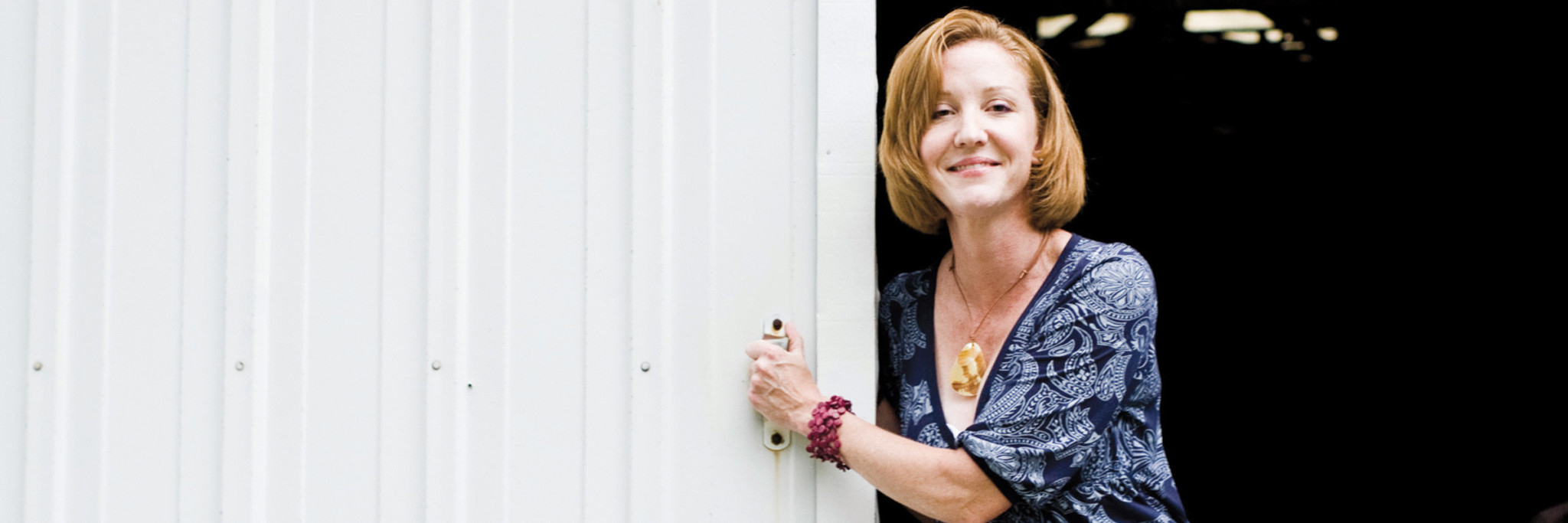Ann Townsend ’85 says VIDA’s stark pie charts have power. “They start serious discussions, and there is nuance in this conversation. It’s not men against women. For us, it’s this: here’s ‘The Count.’ Let’s talk about it.”
Cate Marvin was having a bad night. She’s a poet and professor at Columbia, and her proposal for a 2009 literary conference panel had been rejected. It happens. But the proposals that were accepted made her wonder: was it the paper’s feminist overtones? That night, as she rolled socks into balls and stuffed folded shirts into the corners of drawers, she flashed on Tillie Olsen’s short story, “As I Stand Here Ironing.” (If you haven’t read it, go do. It’ll stay with you.) Her irritation grew, and with a couple of glasses of wine muzzling her send-button censor, Marvin fired off an email to a few female writer friends. “Am I crazy?” she asked at the end of it. “Am I?????”
She wasn’t crazy. Her message set off a firestorm in the literary world. While acknowledging the “dangerously clumsy use of heavily figurative language,” with women as clothes, shoved into drawers, Marvin’s message addressed literary inequity and expressed her fantasy of establishing an organization to support and mentor female writers. The next day, Marvin’s inbox was full. One of the email’s recipients, the poet Erin Belieu, had forwarded Marvin’s message far and wide. And just like that, a new grassroots organization called VIDA: Women in Literary Arts was off and running.
“We got lucky, or smart,” says Ann Townsend ’85, poet and Denison English professor who was in on the ground floor and remains on VIDA’s executive committee with Marvin and Belieu, where she serves as the organization’s chief fiscal officer and fundraiser. And when she talks about the “gutsy and talented” volunteers who have joined up to help VIDA, she laughs. “We’ve been bullies,” she says. “We’ve worked their butts off.”
What VIDA did next was the kicker. The organization took a hard look at some very highbrow publications, examining the gender balance of book reviewers and the authors they reviewed. Such reviews are important to writers’ careers—after all, good reviews sell books—and VIDA’s leaders suspected that something was amiss.
“We needed data,” Townsend says. So VIDA conducted what they called “The Count”; they literally counted the numbers of men and women reviewing and being reviewed. It was a simple, smart idea. And what they found was a dramatic gender gap. Actually—it’s a big honking gender gap. VIDA created graphics to show the results, and the pie charts are so wildly out of whack that they practically shriek off the page. For example, the reviewers at the New York Review of Books were 81 percent male. At the Times Literary Supplement (TLS), a favorite among enlightened latte-sippers, the authors being reviewed were only 32 percent female—and that was a pretty good number compared to the rest of the field. Harper’s, The New Yorker, The New Republic, The Atlantic, to name a few.
Townsend puts it succinctly: “These numbers suck.”
When The Count hit the news, The Guardian said, “…the heart of the British and American literary establishment has been laid bare… .” Slate called it “distressing.” Need to Know on PBS called it “depressing.” VIDA challenged magazines and newspapers to do a count in their own pages. Many did. The New Republic, which has a female editor and has, by her own admission, terrible numbers, even added to the data by counting the 2010 catalogs from 13 book publishers. After “discarding the books that were unlikely to get reviewed—self-help, cooking, art,” they found that women wrote only a small fraction of books published by the likes of Random House, Harper, Knopf, Graywolf, and Harvard University Press.
The big question is, why? Some in the media said the numbers show that men are more confident and therefore present their work for publication and review more frequently—a sort of girls-gone-mild theory. One commentator questioned whether publishers and editors are “biased to think men’s stories are the best.” And Peter Stothard of TLS had the nerve to suggest that women may not be heavy readers of the kind of important work that is reviewed by his publication.
VIDA isn’t answering the questions, just laying out the facts. The Count was published in time for the 2011 Associated Writing Program conference—the big literary meeting for writers, and VIDA strung a banner there that read, “Welcome to the conversation.” That’s their stance— let’s talk, with no finger-wagging, no boys against girls, no shaming. As Belieu says, “There is no cabal or star chamber with men sitting around a table. We have a very positive ethos. We genuinely want conversation.” They even held a reading and dance party during that conference called “VIDA and the Men Who Love Us.”
Still, The Count is shocking; it catches women off guard. Belieu says, “I grew up thinking I was walking onto an even playing field.” Townsend agrees. “If you’d asked before, was I a feminist? I’d have said, yes. But I thought we took care of this a long time ago. I was wrong. The numbers tell me that.”
And none of this is easy. “I’ll probably never win another prize,” Belieu says, “but I’ll be ok.” Her career, like Townsend’s, is well established, and they both feel VIDA’s work is their ethical responsibility. “I’m in a place where speaking out isn’t going to damage me,” Townsend says. “Part of the responsibility of inhabiting this position of privilege is to say, not everyone is here.”
VIDA just published a new Count; it covers the “Best American” series of anthologies (essays, poetry, and short stories, from 1986 through 2010), and the results are about what you’d expect. We can ask why, but to answer might be to oversimplify the question. So let’s just talk. Perhaps about society’s definition of “best.”

